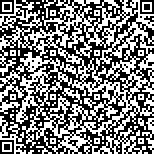| 引用本文: |
龙书可,方玲子,林菲娟,邓燕桃,姜倩倩.基于网络药理学结合分子对接探讨中药枸骨叶抗肿瘤的作用机制[J].湖南中医药大学学报,2021,41(3):431-438[点击复制] |
|
| |
|
|
| 本文已被:浏览 2416次 下载 642次 |
| 基于网络药理学结合分子对接探讨中药枸骨叶抗肿瘤的作用机制 |
| 龙书可,方玲子,林菲娟,邓燕桃,姜倩倩 |
| (深圳市第二人民医院药学部, 广东 深圳 518000;深圳市第二人民医院药学部, 广东 深圳 518000;深圳市老年研究所, 广东 深圳 518000) |
| 摘要: |
| 目的 从网络视角出发,探讨枸骨叶抗肿瘤的的可能作用机制,为其临床使用提供依据。方法 通过中药系统药理学数据库与分析平台(TCMSP)、中医百科全书数据库(ETCM)及查阅相关文献,获取枸骨叶的有效成分及潜在靶点。利用人类基因组注释数据库(GeneCards)结果对比,获得枸骨叶与肿瘤重合的潜在靶点基因,并通过Cytoscape 3.6.0软件构建枸骨叶的“候选成分-作用靶点”网络。利用String数据库和Cytoscape 3.6.0软件构建药物抗肿瘤的蛋白质相互作用(PPI)网络;并通过分子对接验证和筛选潜在的核心化合物,利用DAVID生物信息资源数据库对核心靶点进行基因本体论(GO)功能和京都基因与基因组百科全书(KEGG)通路富集分析。结果 共筛选出枸骨叶抗肿瘤的作用的靶点137个,对应13种有效成分。关键靶点涉及TP53、MAPK1、STAT3等。主要通过调控肿瘤坏死因子(TNF)信号通路、缺氧诱导因子-1(HIF-1)信号通路、磷脂酰肌醇3-激酶(PI3K/AKT)信号通路、肿瘤抑制因子P53信号通路、T细胞受体信号通路等发挥抗癌作用。涉及的癌种包括前列腺癌、胰腺癌、非小细胞肺癌等。分子对接结果显示,长梗冬青苷与MAPK1能稳定地结合并通过蛋白氨基酸Gly32、Glu33、Gly34、Tyr36等发生相互作用。结论 枸骨叶抗肿瘤作用的主要机制涉及槲皮素、熊果酸、长梗冬青苷、芒柄花黄素为代表的多成分,以TP53、MAPK1及STAT3为代表的多靶点,以及细胞增殖、细胞凋亡、信号传导为代表的多通路。 |
| 关键词: 枸骨叶 抗肿瘤 网络药理学 分子对接 |
| DOI:10.3969/j.issn.1674-070X.2021.03.021 |
| 投稿时间:2020-12-14 |
| 基金项目:广东省自然科学基金项目(2018A030313373);深圳市科技计划项目(JCYJ20170306171157738)。 |
|
| Investigation the Mechanism of Anti-cancer Potential of Gouguye (Ilicis Cornutae Folium) Based on Network Pharmacology and Molecular Docking |
| LONG Shuke,FANG Lingzi,LING Feijuan,DENG Yantao,JIANG Qianqian |
| (Department of Pharmacy of Shenzhen Second People's Hospital, Shenzhen, Guangdong 518000, China;Department of Pharmacy of Shenzhen Second People's Hospital, Shenzhen, Guangdong 518000, China;Shenzhen Institute of Gerontology, Shenzhen, Guangdong 518000, China) |
| Abstract: |
| Objective To explore the anti-cancer potential of Gouguye (Ilicis Cornutae Folium) from a network perspective, so as to provide a theoretical basis for it's clinical use. Methods The effective components and potential targets of Gouguye (Ilicis Cornutae Folium) were obtained through the traditional Chinese medicine (TCM) systems pharmacology database (TCMSP), the encyclopedia of TCM (ETCM) and refer to relevant literatures. By comparing the results of human genome database (GeneCards), the overlapping genes of Gouguye (Ilicis Cornutae Folium) and cancer were collected. The "candidate active components-targets" network of Gouguye (Ilicis Cornutae Folium) was built with Cytoscape 3.6.0 software. The anti-tumor protein interaction (PPI) network was constructed using the STRING database and Cytoscape 3.6.0 software. Through molecular docking verification and screening of potential core compounds. The gene ontology (GO) classification enrichment analysis and the kyoto encyclopedia of genes and genomes (KEGG) pathway enrichment analysis for the targets were carried out in DAVID database. Results Total 137 anti-tumor targets of Gouguye (Ilicis Cornutae Folium) were screened out, corresponding to 13 active components. Key targets involved TP53, MAPK1, STAT3, etc. It mainly plays an anti-cancer role by regulating tumor necrosis factor (TNF) signaling pathway, hypoxia induced-factor-1 (HIF-1) signaling pathway, phosphatidylinositol 3-kinase (PI3K/AKT) signaling pathway, tumor suppressor factor P53 signaling pathway, T cell receptor signaling pathway, etc. The cancers involved prostate cancer, pancreatic cancer, non-small cell lung cancer, etc. Molecular docking results showed that pedunculoside and MAPK1 could bind stably and interact with each other through protein amino acids such as Gly32, Glu33, Gly34 and Tyr36. Conclusion The main mechanism of Gouguye (Ilicis Cornutae Folium) in treating cancer is involved to multiple compounds represented by quercetin, ursolic acid, pedunculoside and formononetin, and multiple targets represented by TP53, MAPK1 and STAT3, and multiple signaling pathways represented by cell proliferation, apoptosis and signal transduction. |
| Key words: Gouguye (Ilicis Cornutae Folium) anti-cancer network pharmacology molecular docking |
|

二维码(扫一下试试看!) |
|
|
|
|




